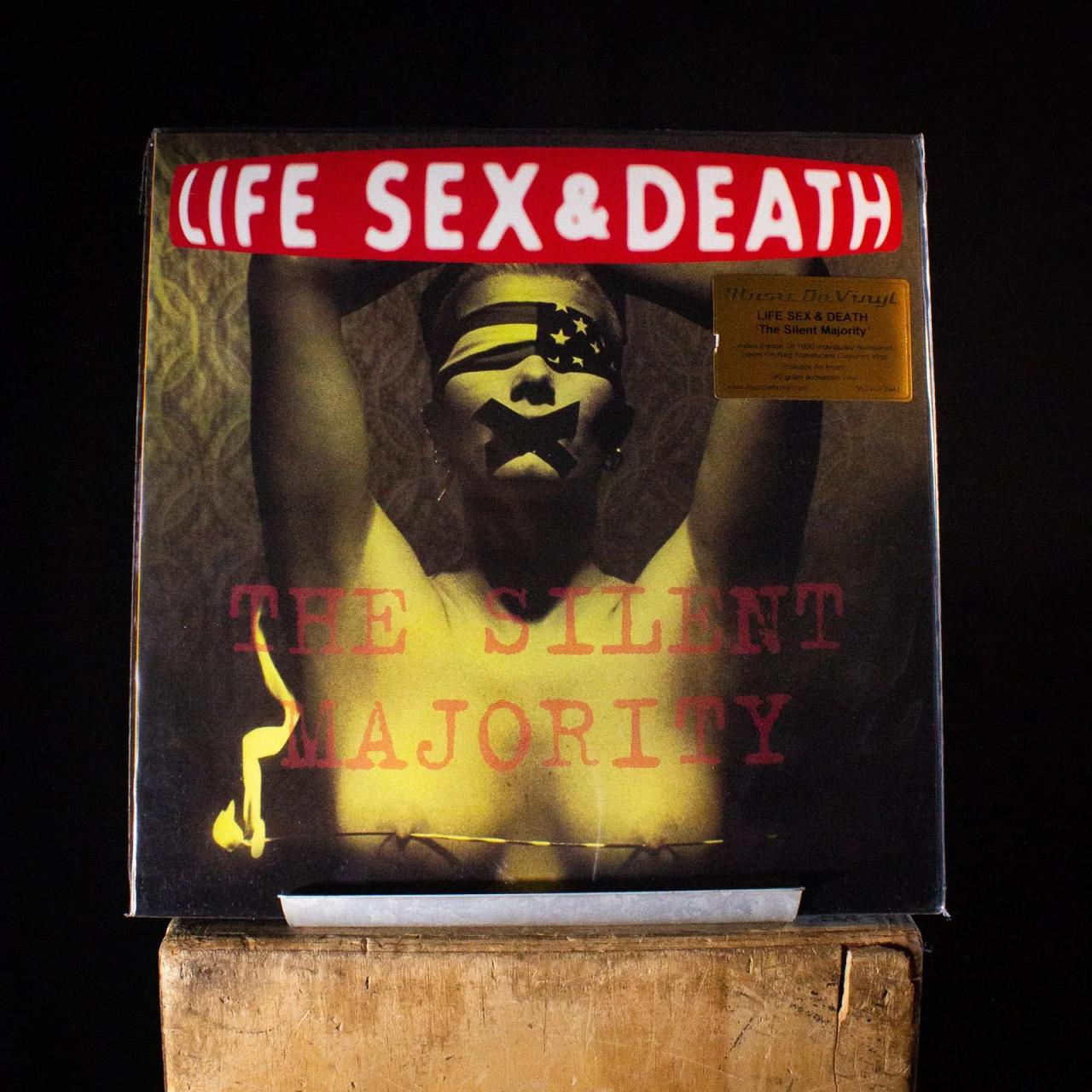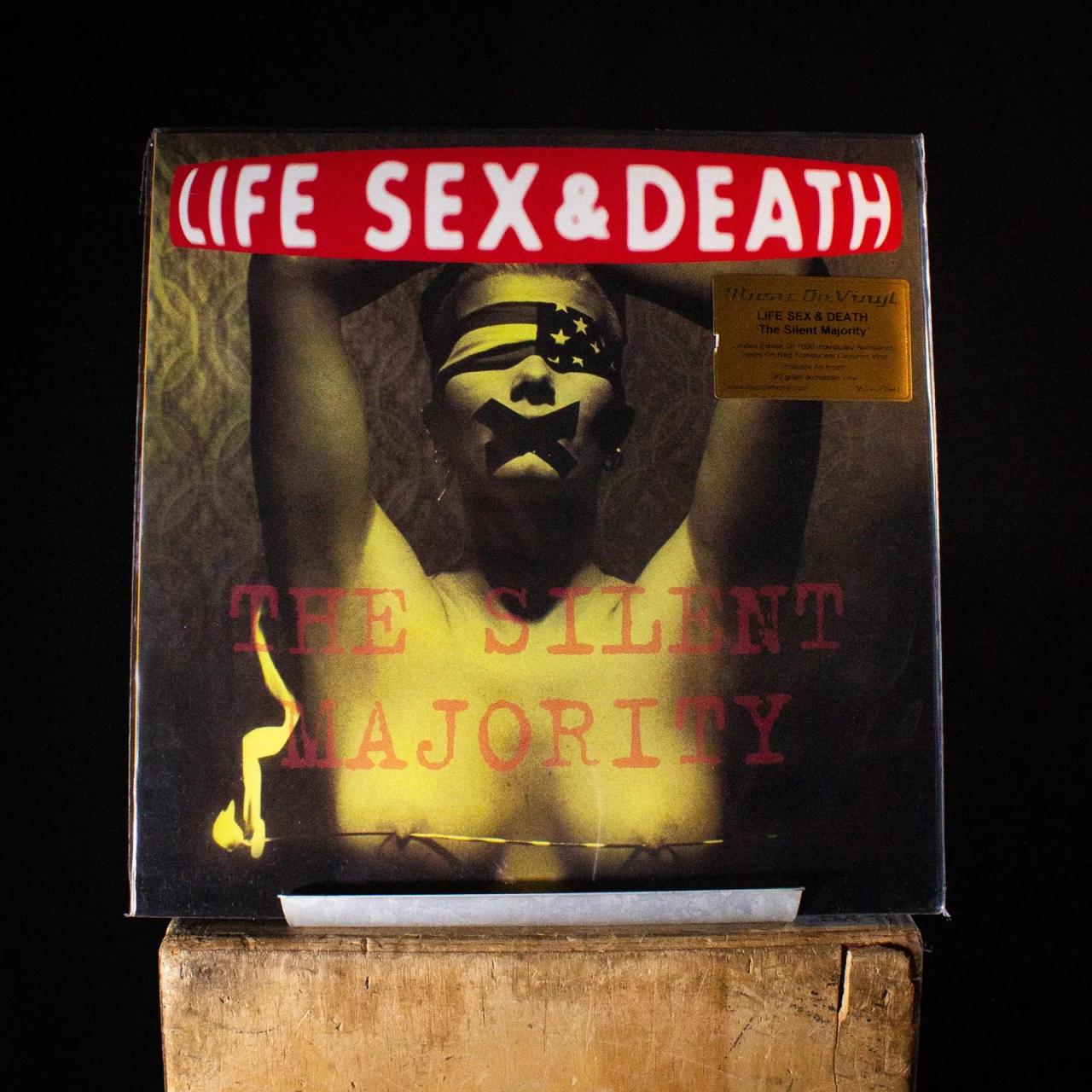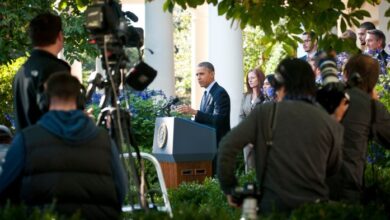The Death of the Silent Majority A Silent Revolution
The death of the silent majority signals a profound shift in the political landscape. This isn’t just about a fading demographic; it’s a complex interplay of evolving societal values, shifting demographics, and the changing role of media in shaping public discourse. We’ll delve into the historical context of the “silent majority,” explore the factors contributing to its perceived decline, and examine its representation in modern political debates.
From the 1960s to the 2020s, the silent majority has been interpreted differently across generations. This piece explores the socio-political context in which this concept emerged, identifying key figures and events associated with it. We’ll also look at how economic anxieties, social issues, and media portrayals have influenced public opinion and political participation, culminating in the modern understanding of this term.
Defining the “Silent Majority”

The concept of the “silent majority” emerged as a powerful political force in the mid-20th century, capturing the attention of policymakers and commentators alike. This group, purportedly representing a broad swath of the population, was often characterized as those who did not actively participate in the public discourse or demonstrations of the time. Their supposed voice was often contrasted with the perceived clamor of activist groups and movements.The term’s meaning and implications have been interpreted and reinterpreted throughout history, often reflecting the prevailing socio-political climate.
It’s crucial to understand the historical context in which this concept took shape, along with the different perceptions and interpretations associated with it.
Historical Overview of the Silent Majority
The concept of a “silent majority” gained prominence in the 1960s, largely in response to social and political upheaval. The Civil Rights Movement, anti-war protests, and other social changes sparked anxieties and divisions within the population. This led to a need to define and articulate a different perspective, one that felt marginalized by the activism of the era.
Different Interpretations and Perceptions
The “silent majority” was not a monolithic entity. Its interpretation varied significantly based on the political and social context of the time. For some, it represented a constituency of moderate, law-abiding citizens who were disillusioned with the perceived radicalism of the era. For others, it served as a rhetorical tool to silence dissenting voices and consolidate political power.
Different factions often projected their own desires and fears onto this ambiguous group.
Socio-Political Context
The term “silent majority” arose during a period of significant social and political transformation. The Vietnam War, the Civil Rights Movement, and the counterculture movement created a climate of intense debate and division. This period saw the rise of activist groups, challenging the status quo, and fostering a sense of disquiet among those who felt their voices were not being heard.
Key Figures and Events
Richard Nixon, during his presidency, prominently employed the concept of the silent majority to rally support for his policies. His appeals resonated with a segment of the population who felt alienated by the social and political changes of the time. The Vietnam War and the subsequent anti-war protests were crucial events that shaped the concept and its application.
The Watergate scandal, while not directly related to the concept, highlighted the complexities of political representation and the role of public opinion in shaping policy.
Comparison of the Silent Majority Across Eras
| Era | Defining Characteristics | Socio-Political Context | Key Figures/Events | Interpretation |
|---|---|---|---|---|
| 1960s | Disillusioned with social change, anti-establishment sentiment. | Vietnam War, Civil Rights Movement, counterculture movement. | Richard Nixon, anti-war protests. | A constituency seeking stability, law and order. |
| 1980s | Support for conservative policies, anti-communist sentiment. | Reagan era, Cold War tensions, economic concerns. | Ronald Reagan, rise of the New Right. | A constituency supporting traditional values and free markets. |
| 2020s | A potentially broad, diverse group, not easily defined. | Political polarization, social media influence, economic anxieties. | Various social movements, political figures. | A constituency that may feel marginalized or unheard, with varying interpretations. |
The Evolving Nature of Political Discontent
The concept of a “silent majority” often implies a broad swath of politically moderate individuals. However, the nature of political discontent is constantly shifting, influenced by a multitude of societal forces. Understanding these evolving dynamics is crucial to comprehending the changing landscape of political engagement. The perceived decline of this “silent majority” is not simply a matter of fewer people holding moderate views; rather, it reflects a more complex interplay of factors.The very definition of “moderate” has shifted.
Changing social norms, economic realities, and technological advancements have redefined what constitutes a mainstream viewpoint. This has led to increased polarization, where individuals feel compelled to align more strongly with specific ideologies to express their opinions and concerns effectively. The rise of social media, for instance, has amplified voices and concerns, often creating echo chambers that reinforce pre-existing biases.
This amplified polarization makes it harder to identify a singular, consistent “silent majority”.
Societal Shifts Influencing Public Opinion
Public opinion is constantly shaped by various societal shifts. Economic downturns, technological innovations, and evolving social norms can all contribute to altering perspectives on political issues. For example, the 2008 financial crisis significantly impacted public trust in government and financial institutions, prompting widespread calls for economic reform. Similarly, the rapid pace of technological advancements, particularly in communication, has empowered individuals to share information and express their views on a global scale, leading to a more dynamic and less predictable political discourse.
Factors Contributing to a Perceived Decline in the Silent Majority
Several factors contribute to the perception of a diminishing silent majority. One key factor is the increasing politicization of everyday issues. Topics previously considered non-political, such as healthcare or education, are now frequently debated within a highly charged political context. This polarization makes it harder to find common ground and fosters a sense of division among previously unengaged citizens.Another contributing factor is the rise of identity politics.
Increasingly, political engagement is linked to group identities, with individuals feeling a stronger sense of belonging and purpose within particular communities. This heightened sense of group affiliation can lead to more vocal and visible political participation. However, it also often leads to greater ideological divisions, potentially pushing some moderate voices to the margins.
Changing Demographics and Values Impacting Political Participation
Demographic shifts and evolving values significantly impact political participation. The rise of younger generations, along with shifting ethnic and racial demographics, introduce fresh perspectives and concerns into the political discourse. For example, younger generations often prioritize issues such as climate change and social justice, shaping the political agenda in ways that differ from previous generations. This can lead to friction between generations and different cultural backgrounds.
Comparing Sources of Political Frustration in Different Communities
Sources of political frustration vary significantly across communities. For instance, working-class communities might be concerned about economic stagnation or job insecurity, while communities of color may face concerns about racial injustice or systemic discrimination. These differing experiences and concerns can create distinct political priorities, making it challenging to find common ground. It is important to recognize that these factors can interact and overlap, leading to multifaceted and complex political landscapes.
Table: Key Demographic Shifts Impacting Political Engagement, The death of the silent majority
| Demographic Shift | Impact on Political Engagement |
|---|---|
| Rise of Millennials and Gen Z | Increased focus on social justice issues, greater online engagement, potentially lower trust in traditional institutions. |
| Changing racial and ethnic demographics | Increased diversity of viewpoints and concerns, potentially leading to greater fragmentation or heightened awareness of issues affecting specific groups. |
| Geographic shifts in population distribution | Potential for differing priorities and concerns based on regional economic conditions or environmental factors. |
| Increasing urbanization | Potentially different political priorities related to urban planning, infrastructure, and social services compared to rural communities. |
The Silent Majority in Modern Discourse
The concept of the “silent majority” continues to reverberate in contemporary political discourse, often invoked to represent a perceived majority opinion not being adequately voiced. This evocation carries a certain weight, suggesting a disconnect between the expressed opinions of a vocal minority and the true sentiments of a larger, less vocal group. However, the application of this label is often fraught with ambiguity and potential for manipulation.The term “silent majority” inherently implies a dichotomy between a vocal, often activist minority, and a larger, potentially apathetic or marginalized majority.
This framing, while seemingly neutral, can have significant consequences, especially in political contexts. The label can be used to silence dissenting voices and marginalize those who hold differing viewpoints. Understanding how this concept is used and misused in modern discourse is crucial to navigating political narratives and recognizing potential biases.
Usage and Misuse of the Term
The “silent majority” label is frequently employed to suggest a consensus or support for a particular political stance that may not be evident in public opinion polls or political activism. This often occurs when a political leader or commentator feels that the vocal minority is overly influencing public discourse. The problem arises when this concept is applied without a clear understanding of the actual views and motivations of the purported “silent majority.” This can lead to misrepresentations of public opinion and can potentially stifle genuine political dialogue.
Rhetoric and Framing
The rhetoric employed when referencing the “silent majority” often relies on generalizations and stereotypes. It frequently positions the “silent majority” as a passive or uninvolved group, contrasting them with the more vocal, active segments of the population. This framing can be highly effective in consolidating support around a particular narrative, but it also risks undermining the importance of individual voices and perspectives.
For example, during periods of heightened political polarization, a leader might claim the “silent majority” supports their policies to dismiss dissent.
Examples in Modern Political Discourse
The “silent majority” concept is invoked in various forms of modern political discourse, from political speeches to opinion columns. For instance, a politician might declare that the silent majority supports a particular policy, even if public polling data suggests otherwise. This tactic aims to give legitimacy to a position by implying a wider base of support than is demonstrably present.
Similarly, commentators might portray a particular group as part of a silent majority that opposes certain social changes or political movements.
Potential Implications of Labeling Certain Groups as “Silent”
Labeling any group as “silent” can have significant implications. It can lead to the marginalization of their voices and perspectives, potentially creating an environment where their concerns and needs are not adequately addressed. This can manifest in the form of policies that fail to represent the needs of the wider population, or a general disregard for minority opinions and experiences.
The silent majority, once a powerful force, seems to be fading. It’s a complex shift, and while the rise of vocal minority groups is undeniable, the rise of new technologies like firefox 3 5 streaks onto the web might be playing a part. Maybe it’s just a reflection of how information spreads differently now. Regardless, the traditional notion of a silent majority feels less relevant in today’s world.
The quiet voice is often drowned out in the digital clamor.
Such labeling may also perpetuate stereotypes or prejudices against particular groups.
Table: Portrayal of the “Silent Majority” in Various Media Outlets
| Media Outlet | Framing of “Silent Majority” | Examples | Potential Bias |
|---|---|---|---|
| News Channel A | Passive, uninvolved majority supporting current policies. | “The silent majority is overwhelmingly in favor of the new tax plan.” | May downplay dissent and differing opinions. |
| News Channel B | A majority opposing social changes or certain political movements. | “The silent majority is concerned about the impact of immigration on their communities.” | May misrepresent or exaggerate opposition. |
| Political Blog X | A politically engaged majority supporting a specific candidate or party. | “The silent majority is behind the candidate, even though polls don’t show it.” | May use the concept to legitimize a candidate’s position. |
This table provides a simplified illustration of how the “silent majority” concept is presented in various media outlets. It is important to note that the framing and interpretation of this concept can vary significantly depending on the context and the particular media outlet.
The Role of Media and Public Opinion
The media plays a crucial role in shaping public perception of the silent majority, a group often characterized by their perceived lack of vocal political expression. Different media outlets, with varying agendas and biases, can present vastly different interpretations of this group’s views, often amplifying or downplaying specific concerns depending on their editorial stances. This influence extends to social media, where echo chambers and targeted advertising further reinforce pre-existing beliefs and limit exposure to diverse perspectives.
Understanding the methods used to gauge public opinion on the silent majority is vital to comprehending how these perceptions are formed and how accurately they reflect the actual sentiments of this population.
Media Representations of the Silent Majority
Media outlets often employ various strategies to represent the silent majority, sometimes through carefully selected narratives or through selective reporting of particular events. This can result in a distorted view of the group’s demographics, motivations, and concerns. Different media outlets may focus on different aspects of the silent majority, potentially overemphasizing or underplaying specific characteristics to suit their editorial goals or target audiences.
Different Media Outlets and Their Representations
Various media outlets employ distinct approaches in portraying the silent majority. Newspapers, for example, may use opinion pieces and editorials to frame narratives that align with their editorial position. Television news often presents brief sound bites or interviews that may not fully capture the complexity of the silent majority’s views. Online news outlets often present articles with concise summaries, potentially oversimplifying the complexities of the silent majority’s perspective.
Social media platforms may present fragmented or incomplete information through user-generated content and trending topics, often shaping public discourse through echo chambers and filtered information streams.
Measuring Public Opinion on the Silent Majority
Various methods are employed to gauge public opinion on the silent majority. Polling organizations use surveys and questionnaires to gather data on public sentiment. Focus groups allow for in-depth discussion and analysis of attitudes and beliefs. Analysis of social media trends and conversations can reveal public sentiment and evolving perspectives. Academic research can employ qualitative and quantitative methods to understand the motivations and concerns of the silent majority, including demographic studies and statistical analysis of public opinion data.
Table of Media Representations
| Media Outlet | Representation Style | Example |
|---|---|---|
| Newspapers (e.g., The New York Times) | In-depth articles and editorials that offer nuanced perspectives | A comprehensive article analyzing the economic anxieties of working-class voters. |
| Television News (e.g., ABC News) | Brief sound bites and interviews from individuals, often simplified and concise | A news segment featuring a short interview with a concerned homeowner about rising property taxes. |
| Online News Outlets (e.g., The Guardian) | Concise articles and summaries that emphasize key points | A summary article on recent economic data and its impact on the silent majority. |
| Social Media (e.g., Twitter) | Fragmented information through user-generated content and trending topics; often shaping public discourse in echo chambers. | A trending hashtag expressing concern about government spending. |
Economic and Social Factors
The perception of a “silent majority” is deeply intertwined with the economic and social realities of a nation. Economic anxieties, like job insecurity or stagnant wages, can fuel resentment and dissatisfaction, creating a sense of disconnect between the government and a portion of the population. Simultaneously, evolving social issues, often accompanied by rapid cultural shifts, can foster divisions and contribute to the perception of a discontented populace.
The silent majority, once a powerful force, seems to be fading. This shift might be due to the ways we use technology, and how quickly our assumptions about it change. For example, understanding how our biases influence our technology choices is crucial, and that’s why it pays to second guess your technology assumptions here.
This questioning approach is key to understanding why the supposed ‘silent majority’ might be less vocal now. It’s a complex picture, but questioning our tech assumptions is a crucial step in understanding these changes.
Understanding these factors is crucial to grasping the nuances of political discontent and the formation of the silent majority.
Economic Conditions and Political Attitudes
Economic hardship often translates into political disillusionment. When individuals feel their economic circumstances are worsening, they may be more inclined to perceive political institutions as failing to address their needs. This sense of economic vulnerability can lead to a detachment from mainstream politics and a feeling of being unheard. The economic anxieties can range from concerns about job security and wage stagnation to anxieties about inflation and the cost of living.
These anxieties can translate into a preference for policies perceived as offering a return to perceived prosperity, or a desire for dramatic change. A lack of economic opportunity, coupled with a perception of systemic inequality, can solidify a sense of disconnect from the political process.
Social Issues and the Silent Majority’s Views
Social issues, such as evolving cultural norms or debates about societal values, can create divides within a population. Differing opinions on social issues can lead to a sense of alienation or marginalization, particularly if these issues are perceived as affecting core values or personal beliefs. This can result in a feeling of being outnumbered or unheard, leading to a sense of forming a “silent majority”.
The silent majority may feel their views are not adequately represented in political discourse, and their voices are not being heard or valued.
Impact on Political Participation
Economic and social factors significantly impact political participation. Periods of economic uncertainty or social upheaval may lead to increased voter turnout, as individuals seek to express their discontent through the ballot box. Conversely, widespread apathy or disillusionment may result in decreased participation, leaving the perception of a silent majority. In either scenario, these factors influence how citizens engage with the political system and how their voices are heard.
This is exemplified by increased participation during economic crises or social revolutions. Conversely, periods of economic prosperity and social stability can lead to lower voter turnout, although this can also be a symptom of general satisfaction or confidence in the political system.
Correlation Between Economic Indicators and Public Opinion
| Economic Indicator | Potential Impact on Public Opinion | Examples |
|---|---|---|
| High Unemployment Rate | Increased dissatisfaction with the government, support for populist candidates | The Great Depression, 2008 Financial Crisis |
| Rising Inflation | Concerns about purchasing power, potential support for candidates promising price controls | Periods of hyperinflation, recent energy crises |
| Stable Employment and Wages | Increased confidence in the government, potential decrease in support for radical change | Periods of economic expansion, technological advancements that boost job creation |
| Increased Inequality | Increased support for policies aimed at redistribution of wealth, potential for social unrest | Growing gap between rich and poor, stagnant wages for the middle class |
This table provides a simplified overview of the complex interplay between economic indicators and public opinion. These are just some examples, and the specific impacts will vary depending on the specific context and other factors at play. Economic indicators are not the sole determinant of public opinion, but they play a significant role in shaping political attitudes and perceptions of the silent majority.
Alternative Perspectives and Interpretations
The concept of the silent majority, while seemingly straightforward, invites scrutiny from various perspectives. It often simplifies complex political realities, potentially overlooking diverse viewpoints and experiences. Alternative interpretations challenge the very premise of a unified, passive majority, offering a more nuanced understanding of political participation and discontent. This exploration delves into these counterarguments and contrasting narratives.The silent majority narrative frequently implies a monolithic, passive group, easily swayed by dominant narratives.
However, this perspective ignores the possibility of a fractured population, where different groups may have varied motivations and interests. Political participation is a multifaceted phenomenon, and the supposed “silent majority” may be engaging in political action through channels not readily apparent.
Challenging the Monolithic View
The assumption of a single, unified silent majority ignores the vast spectrum of political opinions and motivations within the population. Different groups might express their views through various means, including grassroots activism, online forums, or community organizing. These methods might not always fit the traditional definition of “vocal” political participation. Furthermore, a significant portion of the population might simply feel disillusioned or apathetic toward traditional political structures.
The silent majority, once a powerful force, seems to be fading into the background. It’s a trend fueled, perhaps, by the increasing digital awareness of everyone. Recent reports, like the Canadian commission concluding that Facebook is too snoopy canadian commission concludes facebook is too snoopy , highlight the growing unease with how our data is collected and used.
This, in turn, could be a contributing factor to the changing landscape of the silent majority. Maybe it’s just a shift in the way people engage in politics and social discourse. Regardless, the old ways of thinking are definitely changing.
This detachment, however, doesn’t necessarily equate to a unified, predictable political bloc.
Alternative Narratives on Political Participation
Understanding political participation requires acknowledging alternative narratives beyond the silent majority framework. These narratives often highlight the role of marginalized groups, grassroots movements, and evolving forms of political expression.
- Grassroots Activism: This approach emphasizes the importance of localized initiatives and community organizing. It often challenges the notion of a passive majority, as individuals and groups actively engage in political action, albeit not through traditional avenues. The Occupy movement, for example, showcased a potent form of collective action that challenged the status quo, though it did not fit the profile of a monolithic silent majority.
- Digital Activism: The rise of social media and online platforms has created new avenues for political expression and mobilization. Individuals can connect, organize, and disseminate information in ways that bypass traditional media structures. This alternative mode of political participation complicates the idea of a passive majority.
- Marginalized Voices: Many marginalized groups, often excluded from the silent majority narrative, actively engage in political processes through advocacy and organizing. These groups may not always be represented by mainstream narratives or political discourse.
Critique of the Silent Majority Narrative
The silent majority narrative, while seemingly neutral, can be problematic for several reasons. It can marginalize diverse voices and perspectives, potentially silencing dissenting opinions. It can also be used to justify policies or actions that may not reflect the will of the entire population.
- Misrepresentation of Diverse Views: The silent majority concept often simplifies complex political landscapes, potentially overshadowing the diverse opinions and experiences within the population. This simplification can lead to policies that don’t address the needs of specific groups.
- Justification for Status Quo: The narrative might be employed to justify policies that favor the interests of a particular group or maintain the existing power structure. This can lead to a lack of accountability and progress toward addressing societal needs.
Comparing Narratives: Silent Majority vs. Others
| Narrative | Focus | Political Participation | Representation |
|---|---|---|---|
| Silent Majority | Unified, passive majority | Limited, non-vocal participation | Potentially monolithic, overlooks diversity |
| Grassroots Activism | Localized, community-driven initiatives | Active, often non-traditional | Represents diverse groups, potentially challenging status quo |
| Digital Activism | Online mobilization and expression | Varied, diverse forms of participation | Challenges traditional media and representation |
| Marginalized Voices | Advocacy by underrepresented groups | Active, often through advocacy and organizing | Highlights diversity, potential for exclusion in mainstream narratives |
Illustrative Examples

The concept of the “silent majority” has been a recurring theme in political discourse, often invoked to describe a large, largely unexpressed segment of the population. Understanding how this concept has manifested in various historical and political contexts provides crucial insight into its use and potential biases. Identifying specific instances where the silent majority was perceived to influence policy decisions offers a more nuanced view than simply labeling it a monolithic entity.Examining the historical application of the “silent majority” allows us to analyze how different groups have been perceived as falling under this umbrella.
It highlights the evolving nature of political discontent and the often-complex interplay between public opinion, media portrayal, and policy outcomes. This section will explore historical events, highlighting instances where the silent majority concept played a significant role.
Historical Events and the Perceived Silent Majority
The notion of a silent majority has been invoked throughout history, often in response to perceived threats to the status quo or during periods of social and political upheaval. These periods are frequently characterized by anxieties about changing norms and values, leading to a perceived need to represent the views of those not actively expressing themselves.
- The Vietnam War Era: President Nixon frequently invoked the “silent majority” to justify his policies in Vietnam. He argued that a significant portion of the population supported the war effort but were not vocal about it, contrasting this with the anti-war protestors. This example demonstrates how a perceived silent majority can be used to legitimize policies that are opposed by a significant segment of the population, even when the support is uncertain or contested.
- The Civil Rights Movement: While the Civil Rights Movement involved active voices demanding change, the concept of a silent majority could have been applied to those who either remained neutral or did not openly support the movement. Understanding this context allows for a broader perspective on the interplay between visible activism and potentially quieter support or opposition.
- The Reagan Era: The Reagan administration utilized the concept of the silent majority to appeal to a broad base of voters. The narrative of a silent majority often involved a sense of patriotism and economic prosperity. This shows how this concept can be tied to specific political ideologies and agendas.
The Silent Majority in Specific Political Contexts
The concept of the silent majority has been used in diverse political contexts, ranging from domestic policies to foreign relations. The way this concept has been employed varies depending on the specific political environment and the goals of those invoking it.
- Tax Policies: In debates about tax cuts, the silent majority argument might be invoked to suggest that a large portion of taxpayers support the cuts, even if they haven’t actively lobbied for them. Analyzing these instances helps understand the connection between economic policy and the perceived silent majority.
- Immigration Policies: The silent majority argument might be used in discussions about immigration to suggest that a large segment of the population holds a particular viewpoint, even if there is no public polling to validate that claim. This example highlights the potential for misrepresentation and the importance of verifiable data in understanding public opinion.
Identifying Groups as Part of the Silent Majority
Identifying specific groups as part of the silent majority can be misleading, as it often masks the complexity of public opinion and the diversity of viewpoints within any population. There are numerous factors that may influence an individual’s decision to remain silent on a particular issue.
| Historical Period | Perceived Silent Majority Group | Rationale |
|---|---|---|
| Vietnam War Era | Supporters of the war | Often presented as a group that wasn’t vocal about their support |
| Civil Rights Era | Moderate/Neutral individuals | Those not directly involved in the movement, or who held reservations about the pace of change |
| Reagan Era | Voters favoring conservative policies | Associated with a desire for economic growth and reduced government intervention |
Closing Summary: The Death Of The Silent Majority
Ultimately, the death of the silent majority highlights a crucial shift in political discourse. The evolving nature of political discontent, the role of media in shaping perceptions, and the complex interplay of economic and social factors all contribute to this dynamic. This discussion prompts reflection on how we define and understand political participation in the 21st century, acknowledging the limitations of simplistic labels like “silent majority.” A deeper understanding of these evolving narratives is vital to navigating the complexities of modern politics.



